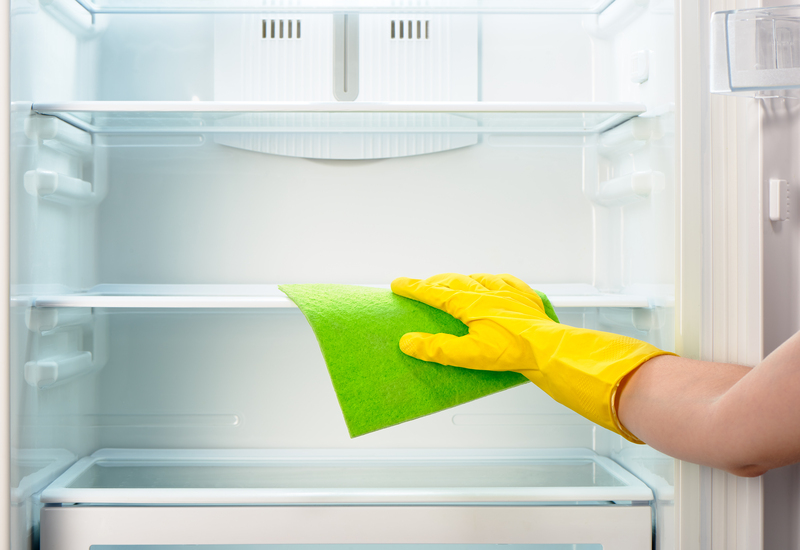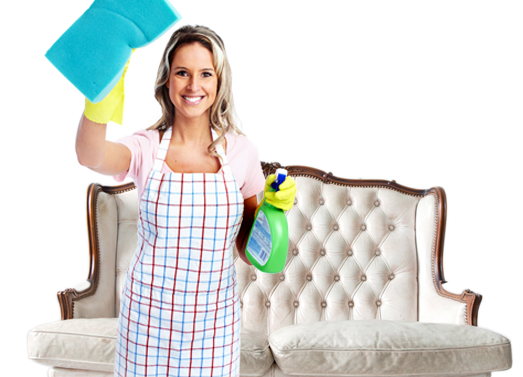Say Farewell to Household Damp Smell
Posted on 29/08/2025
Say Farewell to Household Damp Smell: The Ultimate Guide
If you've ever walked into your home and been greeted by an unpleasant household damp smell, you know how persistent and frustrating it can be. This article dives deep into understanding, identifying, and permanently eliminating that musty odor. We'll cover every angle, from expert prevention strategies to effective remedies, ensuring your home smells fresh year-round. Whether you're dealing with damp odours, mildew, or moisture issues, read on to learn how to banish the damp smell forever.

Understanding the Source of Damp Smell in Homes
What Causes Damp Smells?
The unpleasant, musty odor commonly known as a damp smell in the house usually originates from excess moisture. This moisture creates an environment where mold and mildew thrive, releasing volatile organic compounds (VOCs) responsible for that signature stench. Here are the most common causes:
- Poor Ventilation: Inadequate air circulation traps moisture indoors.
- Leaky Pipes or Roof: Water intrusions create persistent damp zones.
- Condensation: Steam from showers, cooking, or drying clothes indoors adds moisture.
- Flooding or Water Damage: Previous water events leave lasting dampness.
- Absorbent Materials: Carpets, curtains, and upholstery tend to retain moisture.
Why is Household Damp Odor a Problem?
Aside from being an unpleasant assault on the senses, a mildew smell at home can indicate hidden problems and even pose health risks. Mold and mildew spores can exacerbate allergies, trigger asthma attacks, and cause respiratory irritation. Furthermore, persistent dampness can damage belongings, weaken structural integrity, and result in costly repairs.
Signs Your Home Has a Damp Smell Problem
Recognizing early signs can help you act swiftly, preventing a minor issue from turning into a pervasive problem.
- Musty, Earthy Odor: The most obvious indicator of household damp is the lingering, stale smell.
- Discoloration: Water stains, dark patches, or peeling paint on walls and ceilings.
- Mold Growth: Visible fungi, often black, green, or white, appearing on surfaces or behind furniture.
- Condensation: Regular window fogging or damp patches, especially in colder weather.
- Persistent Respiratory Issues: Increase in sneezing, coughing, or breathing troubles indoors.
How to Permanently Eliminate Damp Odors from Your Home
Step One: Identify and Fix the Source
You won't be able to truly say farewell to the house damp smell unless you address its source.
- Check for Leaks: Examine bathrooms, kitchens, attics, and basements for any plumbing leaks, roof weaknesses, or faulty seals.
- Monitor Humidity: Use a hygrometer to ensure your home's relative humidity stays below 60%.
- Assess Drainage: Ensure rainwater and runoff are directed away from the foundation.
- Inspect for Mold: Look behind furniture, under carpets, and inside cupboards for hidden growth.
Step Two: Remove Existing Mold and Mildew
Discovering mold? Don't panic. Here's how to clean it:
- Wear Protective Gear: Use gloves and a mask to avoid inhaling spores.
- Use Appropriate Cleaners: A solution of one part bleach to four parts water can disinfect most non-porous surfaces. For natural alternatives, white vinegar or hydrogen peroxide are also effective.
- Remove and Replace Damaged Materials: Severely affected fabrics, carpets, or drywall may need replacement.
- Dry Surfaces Thoroughly: Moisture is mold's best friend, so ensure everything dries completely.
Step Three: Eliminate Lingering Odors
Once the source and visible mold are gone, it's time to tackle household musty smells that can persist.
- Ventilation: Open windows and doors daily to expel trapped, stale air and bring in fresh breezes.
- Dehumidifiers: These appliances draw excess moisture from the air, especially useful in basements and bathrooms.
- Baking Soda: Sprinkle on carpets or place bowls in rooms to absorb odors.
- Charcoal or Zeolite Absorbers: Natural, chemical-free odor absorbers ideal for enclosed spaces.
- Vinegar Bowls: Place shallow bowls of white vinegar in musty rooms overnight to neutralize odors.
Best Practices for Preventing Damp Smells in the Home
Maintain Ideal Humidity Levels
Keeping air moisture in check is crucial. Invest in a good hygrometer and a quality dehumidifier. The ideal indoor humidity should float between 30-50%. This discourages both mold growth and condensation, effectively nipping household damp smells in the bud.
Optimize Home Ventilation
- Use Exhaust Fans: Run them in kitchens and bathrooms during and after use.
- Let Air Flow: Move furniture away from walls and open windows when weather permits.
- Cross-Ventilate: Open windows at opposite sides to create air flow pathways.
Manage Moisture From Everyday Activities
- Dry Laundry Outdoors: Hanging wet clothes inside releases moisture.
- Wipe Surfaces Regularly: Keep shower walls, windows, and kitchen areas dry.
- Address Spills Immediately: Don't let water sit on floors or furniture.
Regular Home Maintenance
- Inspect Regularly: Check for water damage in basements, attics, and under sinks.
- Clean Drains and Gutters: Blocked water systems can create damp havens.
- Seal Cracks and Gaps: Ensure no water can seep through foundations or windows.
Natural Odor Eliminators for Household Damp Smell
If you're looking to banish damp odors naturally, certain household remedies can really help.
- Baking Soda: A universal odor absorber--sprinkle it on soft furnishings and carpets, let it sit, then vacuum.
- White Vinegar: Place bowls in musty rooms, or use as a mild cleaning solution.
- Coffee Grounds: Absorb odors and leave a pleasant, faint coffee aroma.
- Lemon: The scent of citrus cuts through mustiness--add slices to water in bowls.
- Activated Charcoal: Extremely effective at trapping airborne odors in enclosed spaces.
Frequently Asked Questions About Household Damp Smells
Is a damp smell dangerous?
While the odor itself isn't directly dangerous, persistent household musty odor usually signals the presence of mold or dampness, both of which can contribute to serious respiratory and allergic reactions, especially in sensitive individuals.
Can air fresheners eliminate the damp smell?
Air fresheners only mask the odor temporarily. To truly eliminate musty smells, you must address the root moisture issue and clean any mold or mildew.
How long does it take to get rid of damp smells?
Depending on the severity and source, you can typically remove household damp odor within a few days to a couple of weeks, provided you dry, clean, and ventilate thoroughly.

When to Call a Professional
If you've exhausted DIY remedies but that household damp smell persists, or if mold growth spreads across large areas, it's time to call in a certified mold remediation specialist. Professionals have the equipment and expertise to diagnose hidden leaks, perform thorough clean-ups, and ensure your home is completely free of damp and mold.
Conclusion: Live Fresh, Live Healthier
You no longer have to tolerate an unpleasant, musty environment. By following these comprehensive steps--identifying the source, cleaning thoroughly, and adopting preventative practices--you can say farewell to household damp smells for good. A fresh, clean home isn't just a joy to live in--it's an investment in your family's health and well-being.
- Act quickly at first indication of dampness
- Implement regular ventilation
- Monitor humidity and address leaks immediately
- Enjoy a home free from household damp odors and their health risks!
Say goodbye to musty spaces and breathe easy with these proven strategies!




